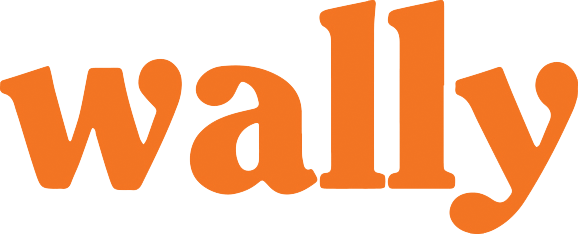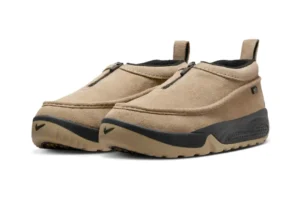Art and fashion have long shared a symbiotic relationship, and this connection has become increasingly pronounced in recent times.
Today, influential artists from diverse disciplines are making significant contributions to the fashion industry. Their impact is visible everywhere, from the collections of major fashion houses to the designs of boutique labels, and from catwalk set designs to the clothing itself.
This collaboration is particularly fitting in an era dominated by self-expression, where clothing has transcended its practical purpose to become a reflection of the wearer’s identity and societal views.
The emergence of wearable art is a logical extension of this trend, offering mutual benefits. Artists gain broader exposure, fashion brands enhance their cultural relevance, and consumers find new avenues for self-expression.
Moreover, these creative intersections introduce the public to fresh, innovative ideas.
- Intersection of Street Art and Fashion: The fusion of fashion and street art is one of the most compelling ways these two worlds intersect.
- Significance: Though street art may not appeal to everyone, it holds undeniable importance within certain communities, serving as an outlet for individuals often marginalized in traditional art circles.
- Grassroots Origins: The term “street art” reflects not only the physical location of the work but also its grassroots origins.
- Unique Characteristics: Street art is characterized by its spontaneous, informal nature and a strong countercultural spirit.
- Influence on Fashion: Since the late 20th century, street art has significantly impacted the world of graphic t-shirts, with some brands achieving sustained success due to their connection with the street art scene.
Street art, like any art or design movement, is constantly evolving, ensuring a steady stream of inspiration and creativity for fashion designers. The dynamic nature of the movement, coupled with the growing number of independent creators, prevents it from becoming stagnant. As art and design styles continue to adapt and evolve, and as high-quality printing techniques become more affordable and accessible, the presence of street art in fashion, particularly on t-shirts, is likely to increase even further.
Some Popular Street Art x Brand Collaborations
Kaws x Uniqlo
Kaws, a prominent street artist, gained recognition in the 2000s for his cartoon-inspired style that quickly infiltrated pop culture. His work has graced collectible vinyl toys, swimwear, and album covers, but none have matched the cultural impact of his collaboration with Japanese retailer Uniqlo. In 2016, Kaws and Uniqlo launched a limited-edition t-shirt line featuring his iconic artwork. The collection’s overwhelming success led to a swift production of a second run to meet global demand, solidifying Kaws’ place as one of the few graffiti artists to achieve such rapid success in the t-shirt market.
Keith Haring x Swatch
The 1980s are often celebrated as a golden age of street art’s integration into high society, particularly in New York, where hip-hop and punk collided with established art scenes. Keith Haring, a leading figure of this era, left an indelible mark with his simplistic and playful designs. His collaboration with Swatch stands out as a prime example of the perfect alignment of artist, brand, and timing. The Keith Haring Swatch collection featured both mass-market and limited-edition pieces, some of which have become highly valuable over time, further cementing Haring’s legacy in both art and fashion.
Shepard Fairey x Obey
Shepard Fairey, a pioneering street artist, made his mark with the “Andre The Giant” sticker in the 1980s, which transcended the street art scene and influenced the “street team” promotion trend of the 1990s. Fairey’s influence grew in the 2000s with his iconic portrait of Barack Obama, which became a symbol of the 2008 presidential campaign. Expanding into fashion, Fairey founded the streetwear brand Obey, whose logo has become synonymous with his work. Obey apparel, widely available in stores like Urban Outfitters, has made street art accessible to a broader audience, introducing new generations to the movement.
Stash x Reebok
New York-based artist Stash had already made a name for himself with his signature blue and gray color schemes on Nike and Reebok sneakers before reimagining Allen Iverson’s first signature shoe, “The Question.” His design brought a fresh take to the familiar silhouette, combining premium materials and unique tones with subtle co-branding. This collaboration demonstrated that sneaker partnerships with artists don’t have to be loud to be impactful; they can be subtle yet powerful.
Cleon Peterson x HUF
L.A. artist Cleon Peterson is known for his monochromatic paintings that symbolically depict societal struggles. His collaborations with various brands have showcased his unique style. In 2012, he partnered with U.K. retailer African Apparel on a t-shirt collection, and in 2016, he teamed up with lifestyle brand HUF for a streetwear collection titled “In Killing We Live.” This exclusive line, featuring a range of apparel and accessories, was available at select retailers, highlighting Peterson’s ongoing influence in both art and fashion.
These artists exemplify the importance of diversifying and monetizing street art through collaborations. By partnering with various retailers, they have maintained cultural relevance and influence throughout their careers.
Related Articles













Hebru Brantley Explores “Black Odyssey” at SCOPE Art Show